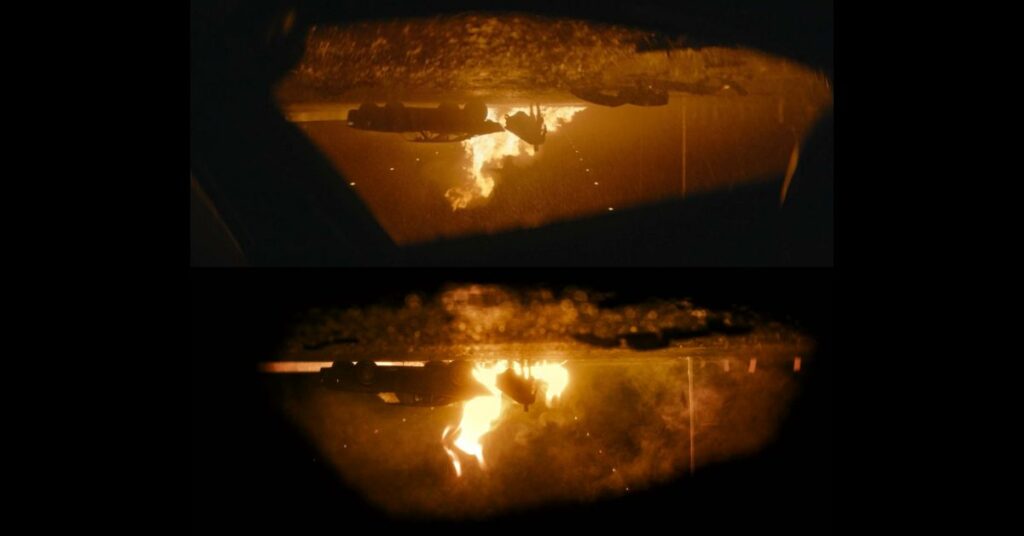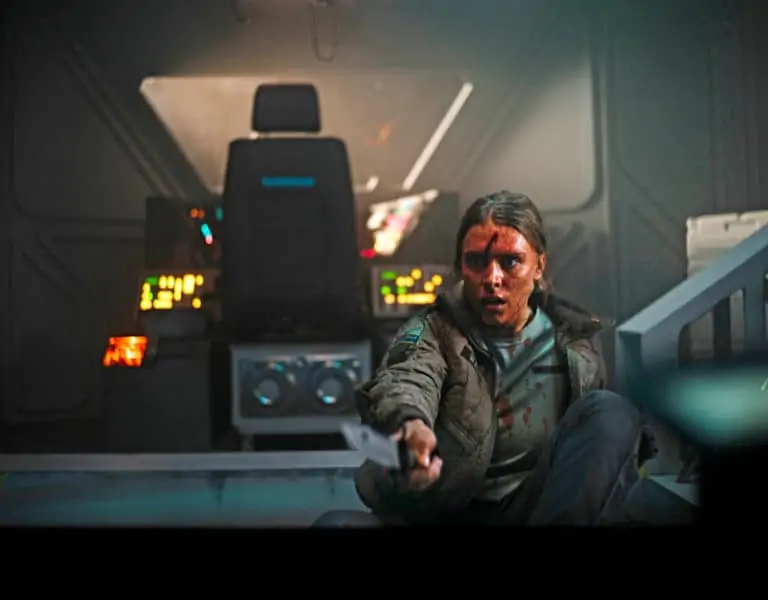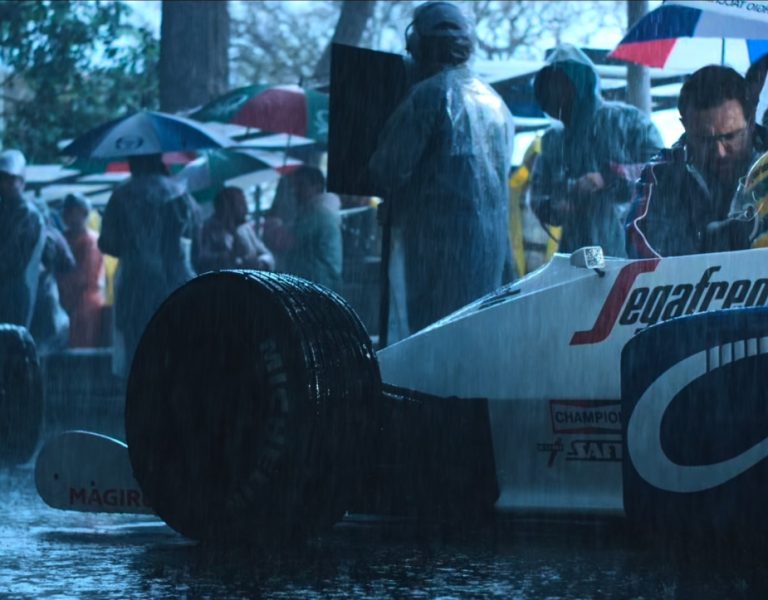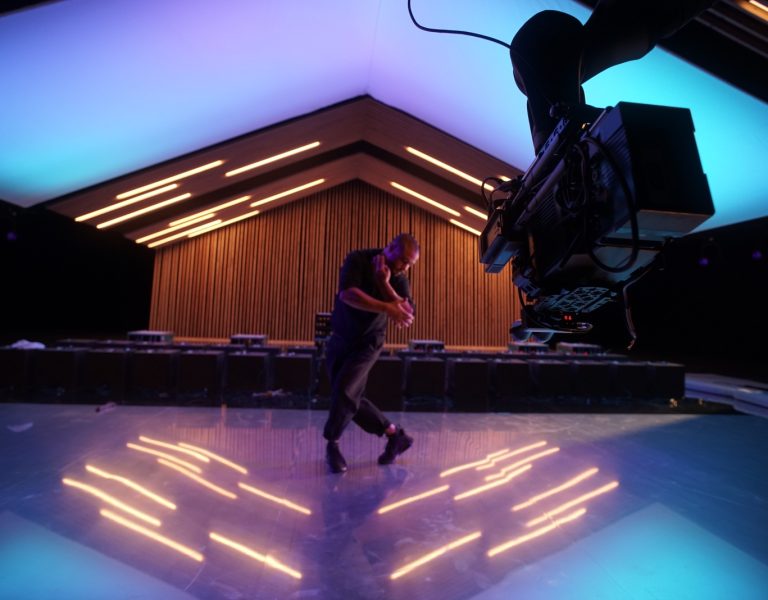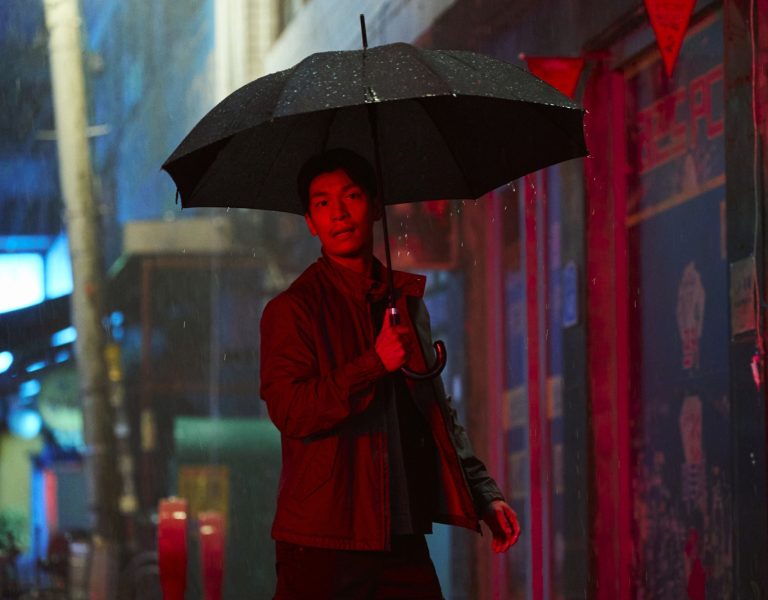The ShotDeck Recreations contest was dreamed up during the first Covid-19 lockdown, when Oscar-nominated cinematographer Lawrence Sher ASC and his wife, Hema, recreated film stills using household items as props, family members as actors, and their cell phones for cameras. Now, the winners of the 2022 ShotDeck Recreations contest have been rewarded with over $30,000 worth of prizes including cameras, lenses, lights and support from Sony, Zeiss, Blackmagic, Aputure, Rosco, SmallHD, Tiffen, and British Cinematographer.
The free competition saw entrants select a frame from the 300,000-plus stills in ShotDeck’s high-definition movie images library and recreate it, DIY-style. This year over 800 entries were received from around the world!
The November issue of British Cinematographer magazine will spotlight four of the competition’s amazing finalists, showcasing their creativity and inspirations behind their recreations. First, it’s the turn of brothers Olley and Charlie Gibson from Melbourne with their clever take on a still from The Batman (2022).
Don’t forget, you can see these shots and more on ShotDeck’s website (which offers a free two-week trial for new members).
Can you tell us a little bit about your background in filmmaking and/or photography?
Olley: I have always been very interested in photography and films and started getting into photography more closely in high school, so I have always had a camera in hand since I was young.
Getting behind a camera in filmmaking only happened more recently when helping my younger brother, Charlie, out on some of his school Media projects during lockdowns, where he created a few short films. I’m in the process of studying filmmaking at university and getting more work experience in the industry to further pursue this passion in cinematography.
Charlie: I have loved films from a very young age and only recently realised that it could be a viable career. Getting a camera helped me pursue this passion for film as I made a few short films for school projects. I plan to continue making films and focus on good storytelling and cinematography as I love creating the look of films. I will likely go to university for filmmaking as I want to get hands on and use industry equipment I don’t currently have access to.
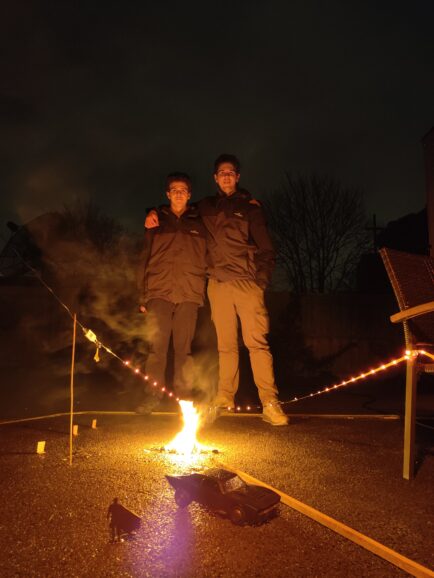
What inspired you to enter the ShotDeck Recreations contest?
Honestly, it was when we saw Greig Fraser ACS ASC repost a story from ShotDeck’s Instagram. It seemed like an awesome opportunity and challenge because we knew there would be so many other amazing submissions. We wanted to see what we could create in a short space of time, using equipment and materials from what we had available around us.
How did you decide which shot from ShotDeck’s library to recreate? What was it about that shot that caught your attention?
We chose this still from The Batman because it is one of our favourite shots, and as we recently got to see the movie earlier this year it was fresh in our minds, once we saw it we knew it was the one. It is such a unique shot and takes you back to the car chase scene from the movie, the fire in the background, the lighting, the rain and the amazing perspective through the window.
Our main goal was to pay homage to the original and try our best to recreate the shot using the pretty basic equipment we had available.
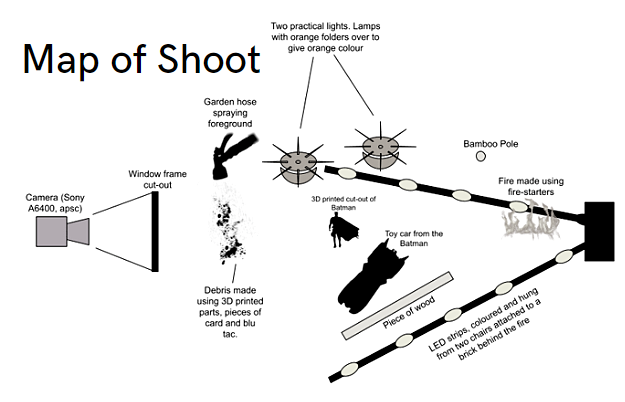
Before you started work on your submission, what challenges did you anticipate? Were there any unexpected challenges that arose during the production process?
Before starting production we knew it would be challenging to recreate a real-life scene down to miniature scale, so we 3D printed many of the parts and focused on getting the scale accurate before we moved on to framing and composition. Creating the wide anamorphic look wasn’t an easy task with our equipment as we only had spherical lenses, but we made it work by cropping the image to get the correct aspect ratio of 2.39.
During the production process we found it very tough to get an accurate outline for the car window since we were only using a piece of card. So we changed the position and size of it many times before getting it just right on the 4th take; with some real help from our laptop that had the overlaid image on it.
Lastly, the one element we didn’t expect to be as difficult as it had been – was the fire. Fire is unpredictable and very hard to control, and after our first couple of takes we realised the challenge and put together a better plan for the next shoot. Moving the fire to a position on the concrete where more wind was blowing in the correct direction ultimately helped the most. But in the end, capturing many images gave us the best chance to get just the right shot balancing the amount of light, rain and direction of the fire.
Where did you shoot your submission?
Our submission was done at our home in Melbourne, on our driveway outside.
What equipment did you use?
For the camera, we used our little Sony A6400 with a Pentax SMC 50mm f1.4 lens to add a little more character to the shot compared to a really clean look to mimic the ‘dirtying the frame’ technique used in The Batman.
We didn’t have access to any studio lights, so we used some lamps we had at home and made some slight modifications by attaching orange plastic to them. The streetlights you can see running behind the fire are LED light strips.
We also used a fog machine for the haze, and a hose to spray rain into the frame.
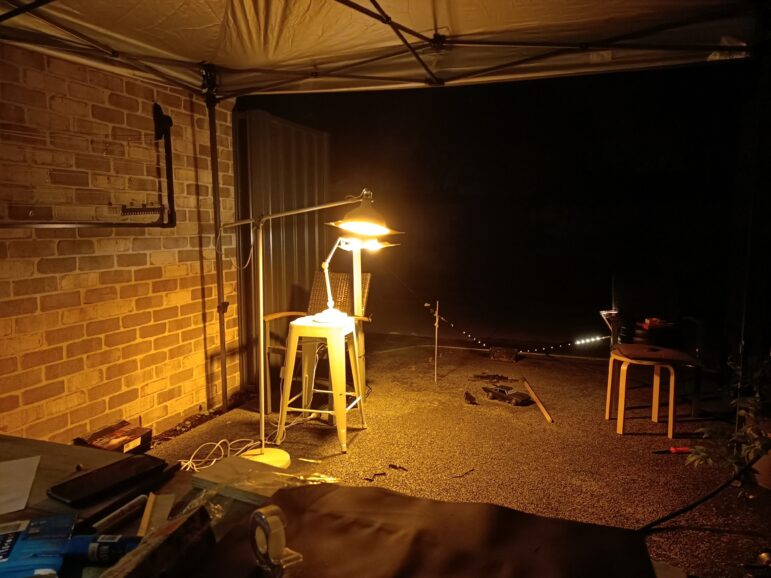
Who were the different members of your team and what were their roles?
Charlie and I directed the recreation, and we both were there throughout the process designing the set, creating props, lighting, behind the camera etc. Our brother Elliott helped us out by setting some objects and lights up, and our dad was the water boy and helped by spraying water onto the ground to mimic the rain.
Can you take us through the shooting process?
The process had many different components so most of our time was spent composing the shot before we got behind the camera. We always started by getting the arrangement of Batman and the car correct, then moved on to the perspective of the streetlights, poles and barriers. Next was to hang the lights above the set and check how it looked on the big screen.
After everything was in position we moved on to capturing the image. However, it wasn’t over yet as we needed to light the fire, constantly press the button on the car for the lights to come on, spray water with a hose, and turn on the fog machine which was proving to be quite a nuisance. Overall, it was one massive balancing act combining the ideal amount of light from the fire, enough smoke and fog in the frame, and the rain falling just right.
How many takes/shots did the process entail and how long did it take to get the perfect shot?
The entire process ended up being 1028 photos over 4 separate takes and around a week to complete, as we tried to capture just the right combination of light, smoke, and rain while waiting for the fire to give us similar movement to the original.
We documented the complete process in detail on our post, but here is a quick overview:
Take one – Was essentially a test to see how the fire looked and paired with our 3D printed Batman figure. We also experimented with the rough layout and positioning of the camera.
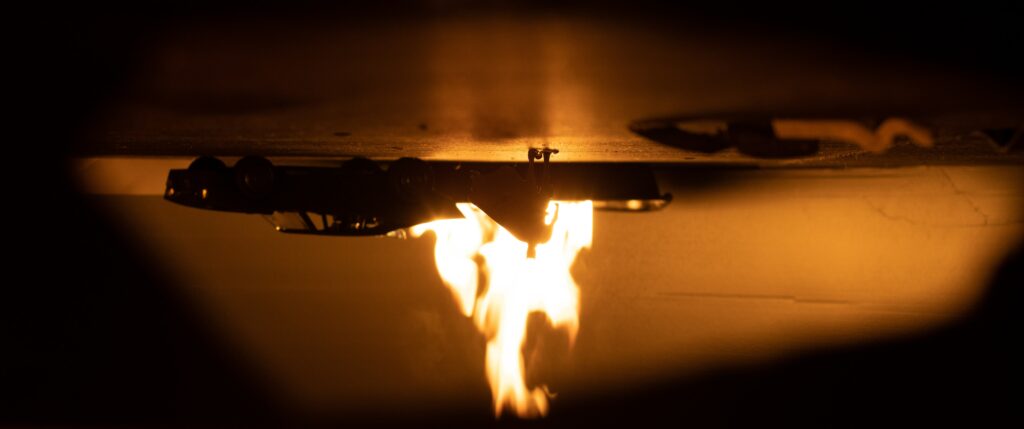
Take two – Moving into an outdoor location on our driveway we were able to get an idea of how the fire and water would look at night with the light reflecting off the ground. We needed to move the backboard much further away, and figure out how to merge the LED strips with the sky.
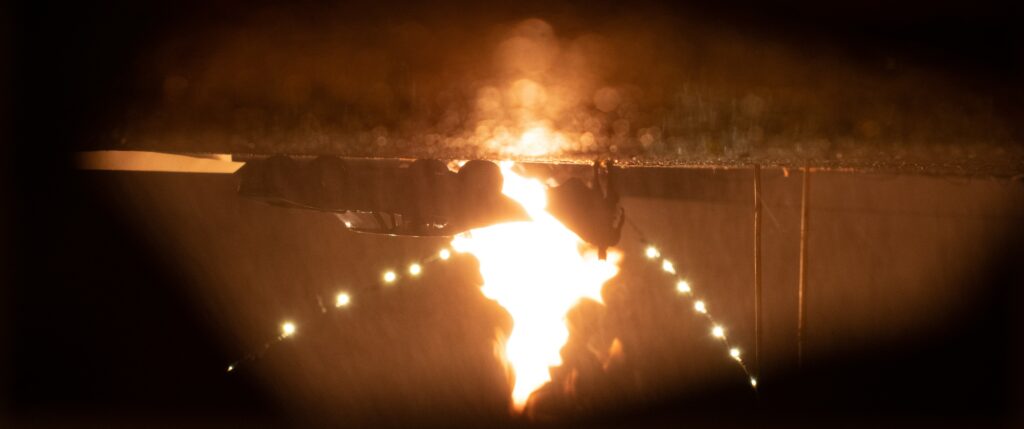
Take three – Was supposed to be our final take, and we got everything almost perfect, with a few things needing improvement. Mainly, we weren’t happy with how the overall framing came out, we couldn’t get everything contained within the 2.39 aspect ratio crop. So, with two days left on the clock, we set out to do one more take.
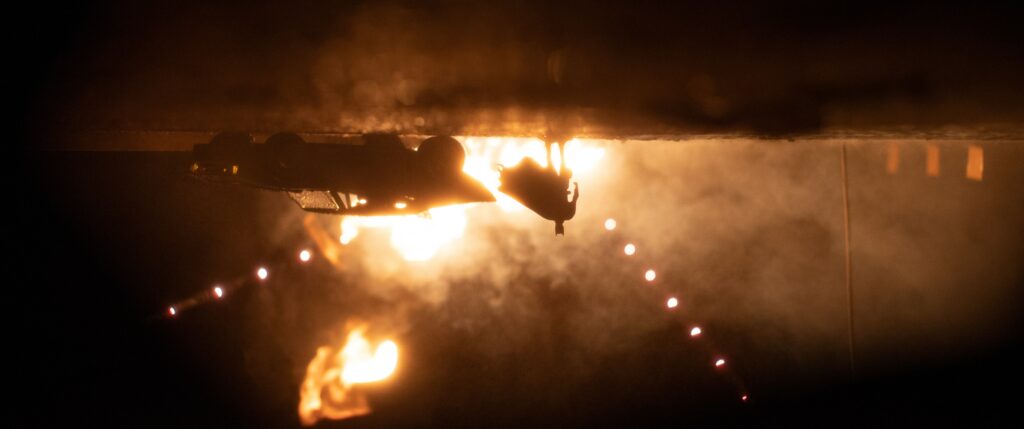
Take four – This time we gave a few extra hours to set everything up in the exact positions required which in the end we think was worth it.
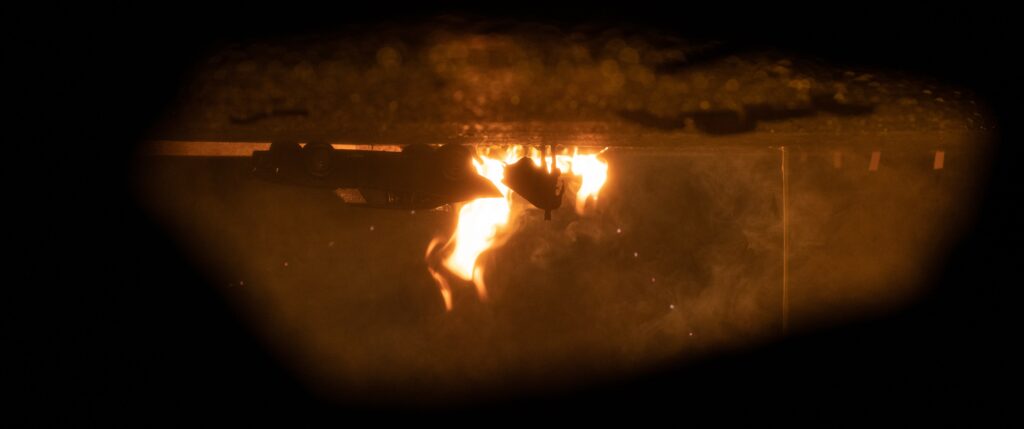
We learnt the hard way of not thoroughly planning all the intricate details from the beginning, and reinforced the respect we have for the amount of time and work put in behind the scenes to create these awesome shots!
Is there anything you wish you’d done differently?
After reflecting on the process, we would have spent a lot more time carefully deciding the order of everything, from creating the set and arranging every piece, prop or light to all of the equipment needed for the shoot. This would have probably saved us from one or two takes, as along the way we realised certain things needed to be improved, included or removed from the set.
How did it feel to be announced as a finalist of the contest?
It was amazing! To be included amongst the top of so many other exceptionally talented people meant so much to us young aspiring cinematographers. It demonstrated that even though at the beginning we didn’t have a clear direction of our end goal, continuing to push through and dedicate time to finish our work the best we could, was worth it in the end. But getting a comment on our post from the man himself – Greig Fraser ACS ASC – genuinely was prize enough!
